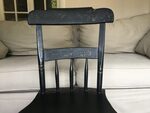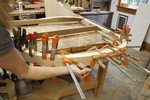We may receive a commission when you use our affiliate links. However, this does not impact our recommendations.
When people choose where to live, they often look at the quality of the schools, the cultural amenities, the traffic and the local economy. All those are good things to consider, but I would like to add another you should ponder: the quality of woodworking in the area.
I’ve traveled all over the world to teach woodworking and have been shocked at how different it is from country to country, region to region.
Some areas are devoid of tools, scant on reasonably priced materials and lack the cultural resources that fertilize good woodworking. Other places are incredibly rich and make woodworking a much easier proposition, either as a professional or hobbyist.
I am fortunate to live in an area of the country where woodworking is much easier. Hardwoods and some softwoods are dirt cheap. Property is cheap. The cost of living is low. And there is enough history here that people want to keep traditional crafts alive.
What does this really mean in dollars? Because we are surrounded by Appalachian hardwood forests, I can buy perfect walnut for $4 a board foot. Cherry is about $3-$5. Maple is $3. Poplar is $1 to $3, depending on the grade. We have tons of Southern yellow pine for about $1 a board foot. (Note that these prices are for experienced residents. Drive a truck here, and you’ll find walnut will be the $8/board foot tourist price.)
Culturally, we have government support for people who wish to carry on traditional craft. We have areas devoted to craft, such as Berea, Ky., and museums all over the Midwest that embrace decorative arts, such as the Speed and the Cincinnati Art Museum. Not to mention the numerous Shaker sites and supporting museums.
I own a 3,000-square-foot shop in an urban area surrounded by other shops and customers with a $1,100 monthly mortgage and living space above for me or a tenant. I have access to multiple trucking facilities to ship my goods anywhere in the world. Some might think this is a brag. But locals will say I overpaid.
And, most importantly, I am surrounded by like-minded people. We have workshops within a stone’s throw of ours that build furniture, millwork, carving, stained glass, sculptural metalwork, upholstery and sign-making. There’s always work to be had if you want it.
I’m not saying that Cincinnati, Ohio, or Covington, Ky., are the promised lands for woodworking. Instead, where I live is one of many places on the East Coast, Midwest, Upper Midwest and Appalachia that have ready access to wood, tools, property and transportation. I know there are areas like this all over the world. Woodworking in Paris, France, can be more difficult than in Paris, Ky.
You can be a woodworker anywhere. But if you are lucky enough to get to choose where to live, you can make it easier on yourself by making woodworking part of the equation.
— Christopher Schwarz
Here are some supplies and tools we find essential in our everyday work around the shop. We may receive a commission from sales referred by our links; however, we have carefully selected these products for their usefulness and quality.










